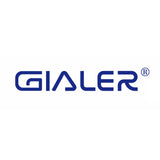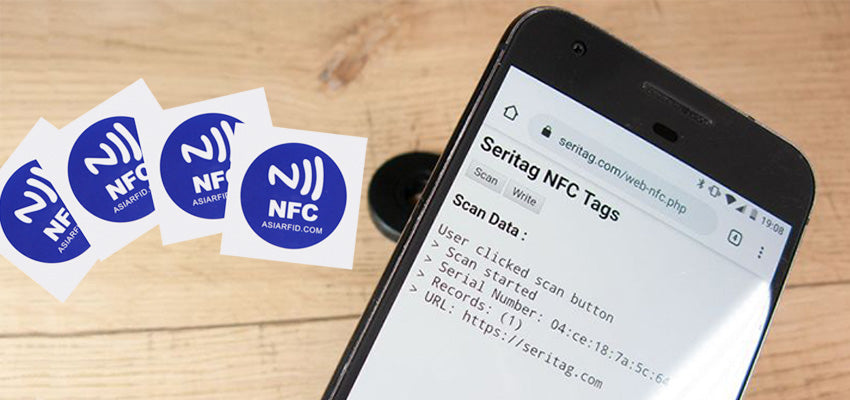NFC tag is a small, wireless device that can be used to store and exchange data between electronic devices. NFC tags are often used to store information such as contact information, website links, or even small bits of text.
NFC tags can be read by any device with an NFC reader, such as a smartphone or tablet. They are used in numerous applications, such as contactless payment, ticketing, and information sharing.
NFC tags come in several form factors, including key fobs, stickers, and cards. This article will focus on NFC tags embedded in common everyday objects, such as business cards and posters.

What is NFC?
Near Field Communication (NFC) is a wireless communication technology that allows devices to exchange data over short distances. NFC is similar to Bluetooth in that it uses radio waves to communicate between devices. However, NFC has a shorter range than Bluetooth and does not require pairing.
The technology is a subset of RFID (Radio Frequency Identification), which is a broader category that includes NFC and other types of wireless communication. It uses 13.56 MHz radio waves (HF branch of RFID) to communicate between devices.
Additionally, this technology is heavily regulated by international standards bodies, such as the International Organization for Standardization (ISO) and the European Telecommunications Standards Institute (ETSI). This way, NFC is safe and secure for use in a variety of applications, such as contactless payment and ticketing.
How does NFC work?
NFC tags contain small microchips with memory that can store a small amount of data. These tags are powered by the electromagnetic field generated by an NFC reader.
When an NFC-enabled device, such as a smartphone, is brought close to an NFC tag, the two devices can exchange data. The NFC reader sends a signal to the tag that powers it up. The tag then responds by sending its stored data to the reader.
The data exchange is typically very quick, taking only a few milliseconds. And, since NFC tags do not require batteries, they can hold data for years without needing to be replaced.
An NFC tag contains three main components:
- An NFC Microchip. This is the brain of the tag, where the data is stored. It is located in the center of the tag to protect it from damage.
- An NFC Antenna. This is what allows the tag to communicate with an NFC reader. The antenna is typically made of copper or aluminum and is located around the edge of the tag. It transmits or receives the radio waves that carry the data.
- A Substrate. This is the material that the microchip and antenna are mounted on. It can be made of paper, plastic, or metal. The substrate determines the form factor of the tag. For example, a sticker tag would have a flexible substrate, while a card tag would have a rigid substrate.
The three constituents work together to allow an NFC tag to store and exchange data. If any of the three components is damaged, the tag will no longer be functional.
NFC Forum classifies tags into six types, depending on the amount of data they can store and how that data is accessed.
- Type 1. This is the most common type of NFC tag. It typically has a capacity of 96 bytes and can be read and written by any NFC-enabled device. Type 1 tags are often used for simple applications, such as storing a URL or sharing contact information.
- Type 2. This type of NFC tag has a capacity of 48 bytes or 144 bytes and can be read/write or read-only. They are regulated by ISO 14443A standards and have anti-collision protection.
- Type 3. This type of NFC tag has a capacity of 212/424 bytes and can be read and written to by any NFC-enabled device. Type 3 tags are often used for more complex applications that require more data, such as storing a digital business card or sharing a photo.
- Type 4. This type of NFC tag has a capacity of 4-32 KB and can be read and written to by any NFC-enabled device. They have a transmission rate of up to 424kbits/s, making them ideal for applications that require fast data transfer, such as inventory management in a fast-paced warehouse.
- Type 5. This type of NFC tag has a capacity of up to 2528 bytes. Its storage is re-writeable and read-only, with anti-collision features. The type 5 tag is based on the ISO 15693 standard.
- Type 6. This type of NFC tag has a capacity of up to 4Kbyte memory and can only be read by an NFC-enabled device. They are based on the ISO 14443A standards and have anti-collision features.
Each type of NFC tag has its benefits and drawbacks. For example, Type 1 tags are the most common and lowest cost, but they have the smallest capacity. Type 6 tags have the largest capacity but are also expensive.
When choosing an NFC tag, it is important to consider the type of data you will be storing and the amount of space you will need. If you only need to store a URL or some contact information, a Type 1 or Type 2 tag will suffice.
NFC tags require a comprehensive NFC system to be functional. Besides the tag, you will need an NFC reader or an NFC-enabled device. NFC tags come in different forms, including FC cards, BFC wristbands, and FC keyfobs.
NFC readers are devices that can read and write data to NFC tags. They come in a variety of form factors, such as handheld, fixed, desktop, or vehicle-mounted.
Some common examples of NFC readers are:
- NFC-enabled smartphones
- NFC point-of-sale terminals
- NFC door access control systems
- NFC ticketing machines
- NFC gate readers
How you use this technology depends on your needs. For example, a business requires a point-of-sale terminal to keep track of inventory and sales. An NFC door access control system requires an NFC reader to grant or deny access to a certain area.
Besides, NFC tags can be embedded in smartphones to make payments, store loyalty cards, or share contact information. For example, Android Pay and Apple Pay use NFC tags to make contactless payments.
NFC Tag Programming
An NFC tag can be programmed to store various types of data, such as URLs, contact information, or simple text messages. The data is stored in the form of NDEF (NFC Data Exchange Format) records.
To program an NFC tag, you will need an NFC reader and the appropriate software. The steps to program an NFC tag vary depending on the type of tag and the NFC system you are using.
In general, you will need to configure the NFC reader and then write the data to the tag. The process is similar to writing a file to a USB drive.
Once the tag is programmed, it can be read by any NFC-enabled device. For example, if you programmed an NFC tag with your contact information, another NFC-enabled phone can read the tag and add your contact details to its address book.
NFC tags come in a variety of form factors to suit different needs. The most common form factors are:
- NFC Key Fobs. Key fobs are small NFC tags that can be attached to a keychain. They are often used for security applications, such as door access control.
- NFC Stickers. Stickers are flexible and can be affixed to almost any surface. They are popular for applications such as product branding and marketing.
- NFC Cards. NFC cards are similar in size and shape to credit cards. They are durable and can be used in a variety of applications, such as payment, ticketing, and access control. They are also commonly used as employee ID cards.
- NFC Wristbands/ Bracelets. Wristbands and bracelets are comfortable to wear and are often used in sports and events applications. They can also be used for security, such as event management and access control.
These are only a few of the most common form factors. NFC tags are also available in other form factors, such as buttons, coins, and pens.
When choosing an NFC tag, it is crucial to consider the application you will be using it for. For example, a door access control system requires a robust tag that can withstand harsh conditions, such as extreme temperatures and weather.
There are many benefits of using NFC tags. Some of the most common benefits include:
- Convenience. NFC tags provide a convenient way to store and share data. For example, you can program an NFC tag with a URL to your business website. When customers tap their NFC-enabled phone on the tag, they will be automatically directed to your website.
- Security. Using an NFC door access control system can help to improve security. NFC tags can be programmed with unique IDs that can be used to grant or deny access to a certain area.
- Compatibility. NFC tags are compatible with all NFC-enabled devices. This means you can use NFC tags with any type of smartphone, regardless of the operating system.
- Flexibility. NFC tags are available in a variety of form factors. This means they can be used for several applications, such as door access control, inventory management, or ticketing.
Overall, NFC tags offer a convenient and versatile solution for several applications. It offers unrivaled compatibility and flexibility, making it the perfect technology for your needs









